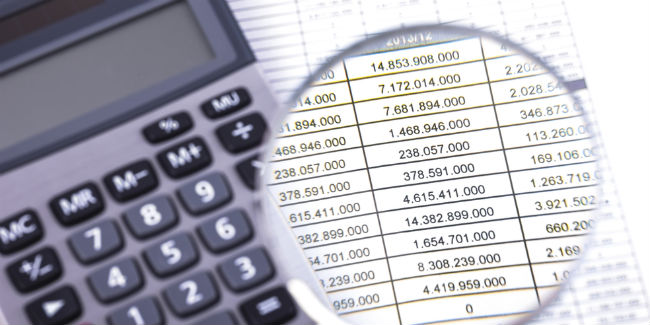The first time (or, to be honest, even the fifth or sixth time) you look at your profit and loss statement, if your background isn’t in finance or accounting, it can be a bit confusing. Don’t be discouraged. All you need to do is learn the accounting jargon, and approaching your P&L (also known as an income statement or revenue statement) will get easier every time. 
A P&L’s job is to give you a clear, overall picture of your business’s net income. How do you figure out what the net income is?
Subtract all your expenses from the total revenue you’re bringing in. But, it is not always that easy.
P&Ls can be more complicated depending on your business model. For a sole prop consultant, it could be very straightforward. But, a retail store with employees, suppliers, and more could have an incredibly complex statement.
P&Ls can be produced for any period of time, such as monthly, quarterly, or annually. The more often you generate them, the better.
Obviously, the profit and loss statement is incredibly important. In fact, most businesses are required by law to complete them. But, even if you weren’t, this is a practice your business should be religiously following. They help influence your future business decisions and provide a real idea of what is going on with your business finances. Profit and loss forms are also incredibly important if you plan to apply for a small business loan.
Diagnosing Your P&L
Here’s a little cheat sheet of the various terms that make up your P&L:
- Revenue – We know you know this one, but it is always good to review! Revenue includes the total sales that you make, along with money you receive from things like selling equipment or perhaps even receiving a refund on your taxes.
- Expenditures – You know exactly what type of information is contained on the total expenditure line, but there may be specific types of expenditures you aren’t as familiar with.
- COGS – COGS stands for cost of goods sold. Long story short, just because you sell a cup of coffee for $4, you’re not making $4. You need to account for the cost of materials and time it takes to produce that singular cup of coffee.
- OPEX – OPEX stands for operational expenditures. These expenses include any other costs associated with running your business that are not included in the cost of goods. For example: workers’ wages, travel, training, leases, utilities, equipment purchases, hardware and software, advertising, cell phone, and internet service. The list can get quite extensive, depending on the size and type of business you operate.
- Depreciation – You already know that if you drive a new car off the lot, it immediately loses some of its value. This is depreciation — and it doesn’t just apply to cars. Equipment, machinery, and other items in your business can lose value over time, and this is something that can be counted as a loss at tax time.
- Profit – Profit is the “bottom line” on a profit and loss statement. It’s what’s left after you subtract all your expenses from your total revenue. And it’s probably the most important line for you. After all, your end game is to be profitable (and then once you reach that goal, increase that profit). However, if you dig a little further, you’ll find there are actually different types of profit represented on your statement.
- Gross Profit – This number is what you get when you subtract the cost of goods sold from your revenue. Business expenses like wages, utilities, and more are paid from your business’s gross profit.
- EBIT – This stands for earnings before interest and tax, and this number comes from subtracting both COGS and OPEX from your total revenue. The EBIT is a great indicator of business performance.
- EBITDA – This acronym stands for earning before interest, tax, depreciation and amortization. While this line can also be good for measuring profitability, the fact that it includes non-cash items (depreciation and amortization) means it doesn’t seriously impact your cash flow for the moment. But, it’s still important to understand. (However, most likely not as useful to you in the grand scheme of things.)
Understand your P&L is an important step to profitability (or increased profitability). Run your profit and loss statement frequently, identifying what is keeping you from your goal. Do you need to increase revenue, cut expenses, or both? Compare and contrast your most recent statements with past statements for a better picture of your current position and to help you make the most educated decisions going forward.
Need a profit and loss statement template? You can download one here for free.
A version of this post was originally published on the Fundera Ledger.
Meredith Wood is the Editor-in-Chief at Fundera, an online marketplace for small business loans that matches business owners with the best funding providers for their business. Prior to Fundera, Meredith was the CCO at Funding Gates. Meredith is a resident Finance Advisor on American Express OPEN Forum and an avid business writer. Her advice appears on such sites as Yahoo!, Fox Business, Amex OPEN, AllBusiness, and many more.

